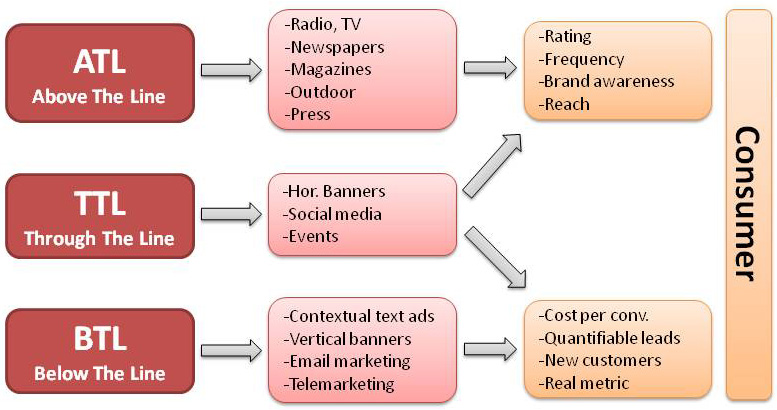Product Mix
Product Mix is the full set of products offered for sale by an organization.
The product mix includes all product lines and categories. It may be defined
more narrowly in specific cases to mean only that set of products in a
particular product line or a particular market. It is basically the
variety of products the company has to offer.
The four dimensions to a company's product mix include width, length, depth and
consistency.
Width: The width of a company's product mix pertains to the number
of product lines that a company sells. For example, if a company has two
product lines, its product mix width is two. Small and upstart businesses will
usually not have a wide product mix. It is more practical to start with some
basic products and build market share. Later on, a company's technology may
allow the company to diversify into other industries and build the width of the
product mix.
The product mix width of BIL is quite large.
Britannia’s product mix width is 3. They have three major product
lines- Biscuits, Dairy products and Breads
Length: Product mix length pertains to the number of total products
or items in a company's product mix, according to Philip Kotler's textbook
"Marketing Management". For example, ABC company may have two product
lines, and five brands within each product line. Thus, ABC's product mix length
would be 10. Companies that have multiple product lines will sometimes keep
track of their average length per product line. In the above case, the average
length of an ABC Company's product line is five.
Britannia Product list and its brand range
Britannia Product focused on bringing more productive
products and expanding the market rapidly. It was started in 1892. It has a
history of over 120 years and its business has grown tremendously stepping at
higher margin and satisfying consumer needs by giving superior quality of
products. Their brand name including the features, quality, price, design etc.
would help them in growth of rapid sales and keeping regular customer and
choosing their product in the market. The products of Britannia Company were
mainly consisting of Biscuits, Snacks and Dairy Products.
Britannia Products
The Britannia Products consists of the four sectors:
Biscuits Sectors
Bread, Cakes and Rusk Sectors
Gift Sectors
Dairy Products
Biscuits Sectors
Britannia Biscuits is famous world-wide for its taste which
is sold at a reasonable and affordable price. Many millions of people enjoy
eating biscuits which is a healthy snack and which is available in all over the
stores at anytime, anywhere and every day.
Following are the various sectors:
·
Kids Nutrition
·
Treat or Luxury
·
Snacking
·
Adult Health
Bread, Rusk sectors
Bread and Rusk which are consumed by adults, kids and by all
generation of people consists of vital nutrients and vitamins, Honey &
Oats, Multi-Grain, Whole Wheat, and Multi-Fiber.
Britannia brings wide variety of such Bread and toasted Rusk which gives
consumers to choose wide range of these products and enjoy the benefits under
Bread and Rusk sectors.
Britannia Bread
Britannia Toasted Rusk
Dairy Products
Britannia Dairy Products is famous world-wide for its taste
which is sold at a reasonable and affordable price. Many millions of people
enjoy eating butter, ghee, milk, cheese, dahi, health drink, choco milk, and
badam milk which is a healthier drink and which is available in all over the
stores at anytime, anywhere and every day.
Britannia Dairy Products are further classified under below products:
·
Cheese
·
Butter
·
Ghee
·
Milk
·
Gourmet Cheese
·
Dahi
Depth: Depth of a product mix pertains to the
total number of variations for each product. Variations can include size, flavor
and any other distinguishing characteristic. For example, if a company sells
three sizes and two flavors of toothpaste, that particular brand of toothpaste
has a depth of six. Just like length, companies sometimes report the average
depth of their product lines; or the depth of a specific product line.
Britannia Bread:
Britannia Bread launched Health Breads in Delhi on Nov 14, 2011. This new range
of breads consists of Honey & Oats Bread, Multi-Grain Bread, 100%
Whole Wheat Bread and Multi-Fiber Bread. Upto the year 1958,
there were no consumption of bread and there was only one unit in Delhi.
Further in the year 1963, Britannia was the first branded sector in the bread
market which offers 400 grams and 800 grams plain white sliced bread. The main
reason of introducing quality bread was to bring to the consumers about the
concept of bread i.e "Eat Healthy and Think Better".
Types of Bread:
1. Honey & Oats Bread: This bread consists of loads of
Honey and oats in every bite of each slice. This was very good and healthy to
people who opt for this bread.
2. Multi-Grain Bread: This has multi grain which consists of oats, ragi, whole
wheat, soya and flax seed and people who consume were so happy that they find
richness of whole grains in every bite of every wholesome slice.
3. Multi-Fiber Bread: This bread is filled with natural wheat and oat fibers to
give healthy breakfast in the morning. Fiber helps in effective digestion and
helps in controlling cholesterol.
4. 100% Whole Wheat Bread: This bread is filled with fresh wheat and good for
health as wheat brings loads of energy to human body.
Consistency: Product mix consistency pertains to
how closely related product lines are to one another--in terms of use,
production and distribution. A company's product mix may be consistent in
distribution but vastly different in use. For example, a small company may sell
its health bars and health magazine in retail stores. However, one product is
edible and the other is not. The production consistency of these products would
vary as well.

















